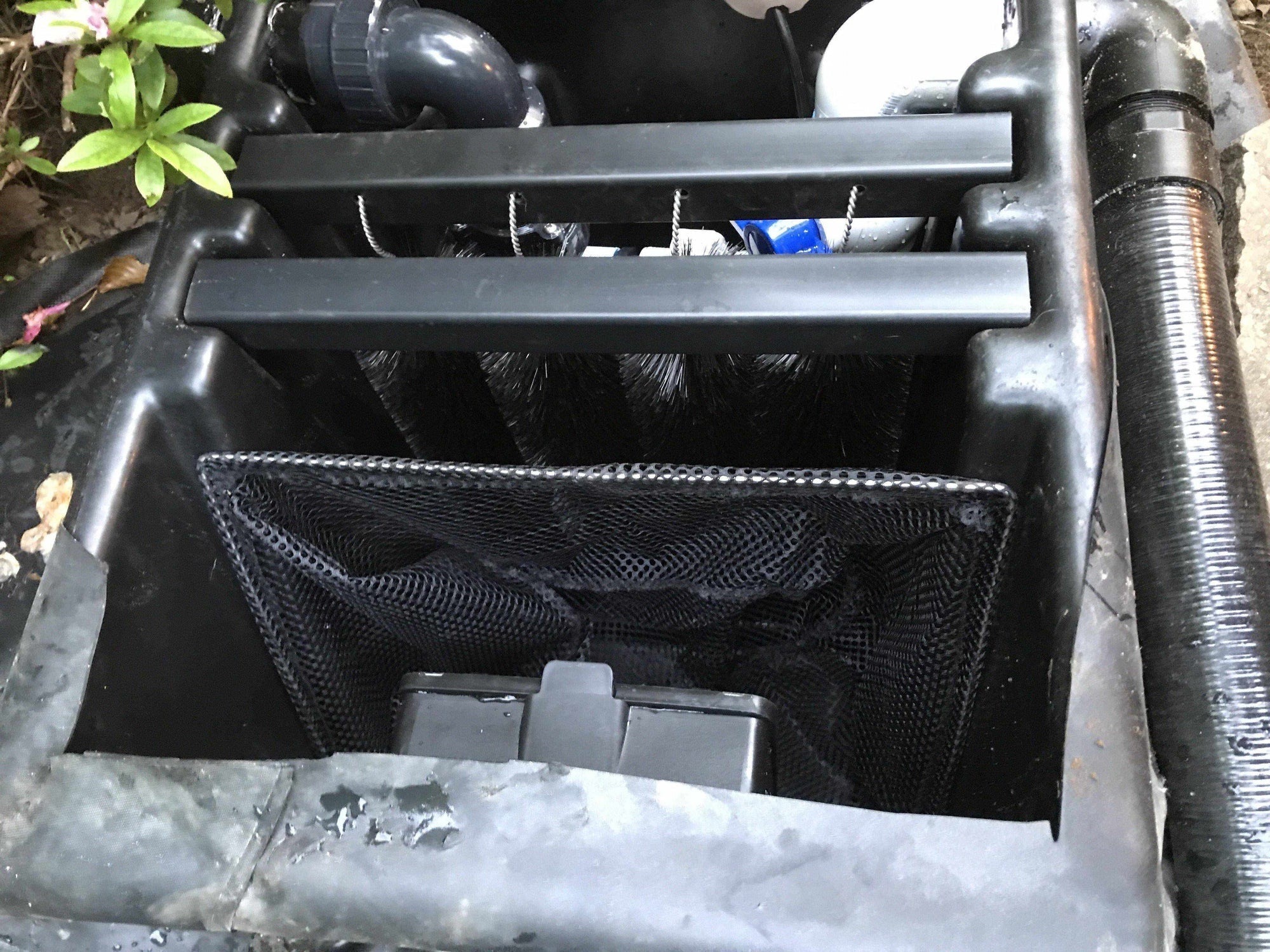A healthy pond will have lots of filtration which will separate debris from the water (mechanical) and provide homes for the beneficial bacteria that clean your pond water (biological). Depending on the size of your pond, there are solutions that include both of these types together. In any case, like sizing other components, more is better! Always maximize filtration. You will NOT regret it!
Skimmers: Debris from plants will always fall into the pond – leaves, blossoms, twigs, etc. You can manually fish the debris out with hand-held skimmer tools, but unless you are going to stand there most of the day, you need a mechanical system to capture it. The most common solution is a skimmer. This is nothing more than a box at the surface of the water with an opening. The box will either have a submersible pump within or have plumbing attached to an external pump. When running, the water in the box is reduced creating a surface current. Anything floating on the surface will be drawn towards and fall into the box. Inside there is usually a basket or net to capture the debris. Some skimmers also contain a secondary, finer filter to capture even smaller debris. Others may also have biological filters in tandem. These boxes have a lid so that you can pull open and dump the debris. Clean the filters as necessary. If you have an existing pond or a pond where a built in box will not work, there are free floating skimmer solutions for just this situation. They are not as efficient, but still better than no skimmer at all.
Under Gravel Filter: Skimmers are great as a standalone mechanical filter for shallow, wide ponds; and are pretty much needed on all ponds that experience falling debris. However, on deeper ponds, creating a current running across the pond surface does not solve two other issues. Some debris does not float and sinks to the bottom, and if there is no current at the pond bottom, the water tends to lack oxygen. True, you can place aerators on the bottom, but it will not solve the problem of all the debris and muck which will build up on the bottom. Enter a mechanical filter across your entire bottom – a series of pipe manifolds with slits facing down across the bottom. Fine screen and 3/4” to 1-1/2” rounded rocks are placed over the pipes 4-6” deep. This system is connected to an external pump. Now, clean water returning from the bio filters and waterfall or stream filled with O2 is pulled to the bottom. The rocks serve as the mechanical filter keeping debris from your system, but the oxygen provides bacteria a home in the rocks too. Any debris that has fallen to the bottom decomposes quickly. Build up will be minimal to boot. Some people complain that having gravel or rocks on pond bottom is a terrible idea. However, most of these complaints are from ponders that do NOT have a bottom filter – just rocks. In their situation, muck and debris will build up on the bottom and it will be very difficult to clean compared to a bare liner.
Biological Filtration: A very important part of your system is your bio-filter. This does not clean debris, but rather toxic chemicals in the water converting them into safe compounds. To do this, you need a medium that can be home to millions of beneficial bacteria. Bio-filters come in many varieties, but in general they are made from plastic compounds that the bacteria cannot break down, are very porous for water to pass through, and have tons of surface area for the bacteria to live on. They come in pads, mats, balls, moving bed, etc. In any case, water from your pond that has been mechanically cleaned of debris should now be directed through the bio-filters - SLOWLY. This gives the bacteria a chance to feed on the toxic chemicals and give off beneficial compounds. There are standalone pre-made boxes for this, or some also have a waterfall weir attached so that the cleaned water then dumps out into a stream or waterfall back down to your pond. The bio-media will last a very long time and only requires an occasional rinse to wash any sludge out of the mats (inorganic material that bacteria cannot break down).
Previous Article: 09: Pond Basics – Pumps
Next Article: 11: Pond Basics – Water Composition

